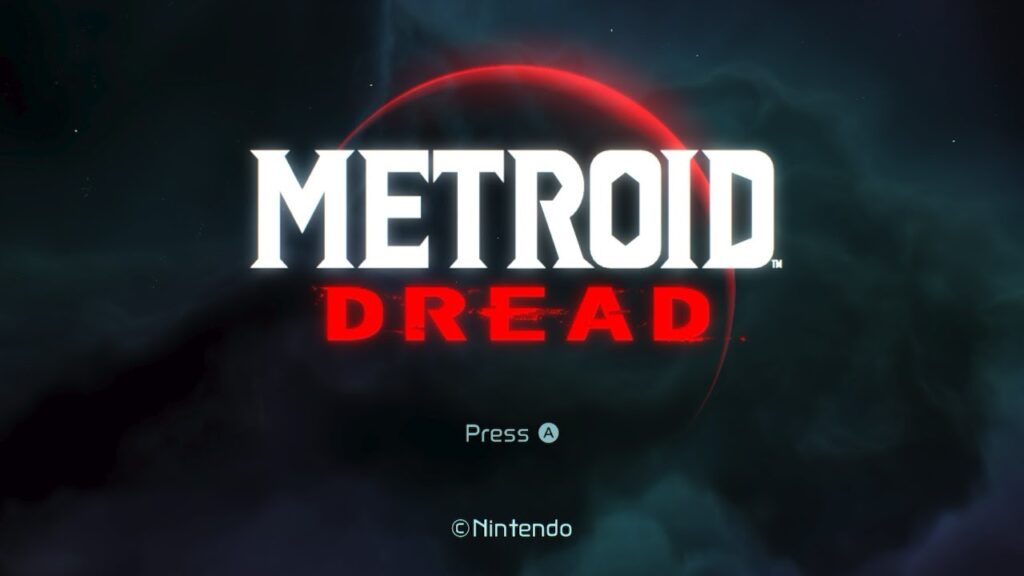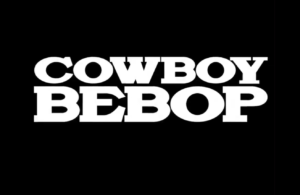“Metroid Dread” by Nintendo

The game’s title screen. Screenshot taken by Morgan L’Fey on a Nintendo Switch.
Metroid Dread is—somewhat surprisingly for a premiere franchise from one of the largest game companies—the first mainline Metroid game since Metroid Fusion for the Game Boy Advance. Continuing that game’s stronger emphasis on story, Dread follows directly after Fusion ends, with the bounty hunter Samus Aran pursuing the X to the planet ZDR, intent on wiping it out before it kills and spreads even further. She’s been flying from crisis to crisis since the original Metroid, has had her DNA altered to include that of the Metroids and been infected with the X-Parasite herself, and is doing her best to be the last survivor of both of those dangers.
Upon arriving, things get complicated. Samus is injured by an unexpected foe, and in typical sequel fashion loses many of her abilities. In a new and hostile environment, she is left to build herself back up in order to escape. Aided only by the AI of her deceased captain, known as ADAM, she begins the ascent back to the planet’s surface and the safety of her vessel.
In many ways, Dread is the same formula as the other Metroidvania games leading up to it: explore a map, find dead-ends and blocked paths, solve a puzzle or beat a boss to get a new tool for navigating the environment, go back and breach the blocked path, rinse, repeat. It’s a formula that works and it’s more than competently executed, with a tightly-knit world and fast movement that keeps the moment-to-moment gameplay brisk and engaging.
Its biggest departure from that formula is the same feature that gives the game its name. Scattered throughout the planet are seven E.N.N.I. robots: powerful, overwhelming foes that lord over sealed off areas of the map. You can’t damage them by normal means. They move faster than you, able to crawl along walls and ceilings and close the distance with ease. A single touch and you’re trapped in a quick-time event with two extremely tight windows with which to escape. Fail, and it’s a game over. This fittingly gives the player a sense of dread as they go about their exploration. No matter how many missile and health pickups you find, the E.N.N.I. can still kill you just as quickly.
Unfortunately, you can situationally gain the power to deal with the robots. Once defeated, the area they inhabited is treated more like the rest of that chunk of the map, with enemies sprinkled throughout and collectibles to find. While there is certainly something to be said for having “safe” areas, it leaves the game falling into a familiar horror game pitfall—as the player becomes strong, the horror fades. Fear largely depends on feeling powerless in the face of something (or nothing). Once you are running through areas killing all of the standard enemies with a few shots without needing to worry about how much damage they do back, that fear and tension are gone.
The game does lean into this change in form, as at that point your goal shifts from a “get to your ship and escape” feel to “find all of your tools to beat the big bad” affair and the game is still engaging in this sci-fi action-adventure form. It just feels like a brick wall of a final boss isn’t the right conclusion to a game that operates largely on tension for the bulk.
The game is visually pleasing; the lighting is particularly well done, with the areas of lava casting a believable glow upon the surrounding premises. The animations are fluid and readable, a necessary trait in a game that depends on quick reactions to specific attack patterns, and the environmental art really sells the different regions of the map. In terms of visuals, the character and enemy designs are probably the real letdown. While Samus’s design remains iconic, none of the new characters or enemies really stood out to me. Even the E.N.N.I., the flagship new enemies Nintendo deemed worthy of getting their own Amiibo figures, aren’t that different from the Geth from Mass Effect, which came out two console generations ago.
The music is another large departure from the earlier games. While themes from Metroid or Super Metroid are well known, particularly through usage in the Super Smash Bros. franchise, Metroid Dread has next to no music. While the endgame does bring back the familiar themes, most of the game is spent in relative silence, making every sound effect echo in your head. Unfortunately, this breaks down during the more action-oriented parts of the game—you’ll get very tired of the missile sound effects by the time you put down the controller. It’s not the worst thing, but it is a disappointment. Especially as there is no way to turn down the sound effects and turn up the music, so that you can enjoy it when it happens.
That lack of options isn’t just for the volume controls. The game has next to no options at all. One difficulty setting, no further accessibility features as many other recent games (including the last few Super Mario titles) have, etc. While this isn’t surprising (and the game has the series typical unlocked hard mode when you beat the game), it is disappointing in the face of some of the difficulty spikes in the game. These come largely in the form of the game’s bosses and mini-bosses. These typically reduce your offensive options—and they hit hard. Too hard perhaps, with even the most prepared player able to withstand less than ten hits on average. Each fight is based around the trial and error of learning the boss’s attack patterns and weak points, learning when to dodge, when to counter. It’s a process that can be fulfilling, but also extremely tiring. Particularly so with some of the repeated mini-bosses—two or more humanoid warriors that move very fast and strike very hard: one encounter took me over two dozen tries, a feat only the final boss matched. I’ve seen chatter about people giving up after hitting these walls, and I empathize with that. It’s unfortunate that the bosses are going to keep some players from being able to experience the rest of the game, and I wish there was some way in the game for it to ease off if needed.
Unfortunately, those difficulty walls are what the game will likely be remembered for, at least in terms of the series. The greater emphasis on story is laudable, but too many players potentially won’t see its conclusion. That’s not to say that the game isn’t good—it most assuredly is, and it has the sales figures to match that—just that it’s a game that limits its audience in a surprising way for a company that’s been so bent on making family and child-friendly games in past years. But the game is fun, it has a great moment-to-moment feel and has a pretty fast pace and rate of collecting new abilities to explore and play with. It’ll definitely make for a really entertaining speedrun in a couple of years once all the tech is ironed out. I did get stumped for a couple of hours due to misreading the map, and some of the collectibles are a bit too difficult to acquire for my taste, but it was a dozen hours mostly well spent. It’s an easy recommendation for Metroidvania fans, and a more hesitant one for the rest.
Scores:
Presentation: 7/10
Gameplay: 6/10
Narrative: 7/10
Overall: 7/10



